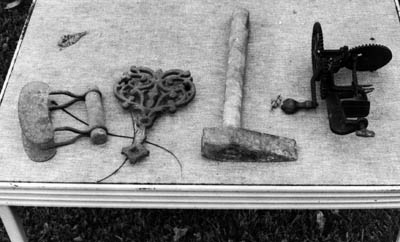Tools of the TradeWarren was fascinated by the tools used by folk craftsmen—blacksmiths, furniture makers, stone carvers—engaged in various pre-industrial trades. Yet, tools were quite literally the tools of his trade as a folklorist. They were cultural artifacts whose study could lead to a greater understanding of language and patterns of distribution across time and space, a way of dating old buildings, and an understanding of how everyday things were made. He often reminded his students that craftsmen rarely left behind written records of their work, but they did leave behind all kinds of objects made with their hands. The primacy of the hand made object was a foundation of Warren’s scholarship. “In my efforts to date old houses in southern Indiana, I have often relied on the evidence of wood screws, for the period between the time of first settlement around 1820 and the Civil War is often important. As far as I know, no one has challenged [Henry C.] Mercer’s dictum that the machine-made pointed wood screw suddenly superseded the machine-made blunt wood screw in 1846. Recently, however, in investigating two old houses, I have found screws in each house that I am convinced are part of the original fabric, some of which are pointed while some are blunt. In such a situation, it is clear at once that the house in question cannot be older than 1846.” |
